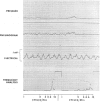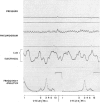Abstract
Recent studies have suggested that a high incidence of 0.05 Hz (3 c/m) slow wave electrical activity is present within the rectosigmoid of patients with the irritable colon syndrome during symptomatic phases. However, it is known that this is a chronic relapsing disorder and in this study we have compared myoelectrical recordings, using an on-line frequency analyser, during periods of severe symptoms and asymptomatic phases. Treatment with either bran (in the form of bran tablets) or an antispasmodic resulted in 12 of the 20 patients becoming free from symptoms after one to three months. In those patients who were initially constipated a statistically significant increase in mean stool weight and a decrease in mean transit time occurred, but this was not associated with any alteration in either percentage motility or electrical activity. In patients with predominant diarrhoea no statistically significant difference occurred in either transit time or stool weight after treatment nor did the abnormal myoelectrical activity return towards normal with symptomatic improvement. These results suggest that a fixed basic myoelectrical abnormality exists which is unrelated to symptoms. This may help to explain the chronic relapsing nature of the irritable colon syndrome.
Full text
PDF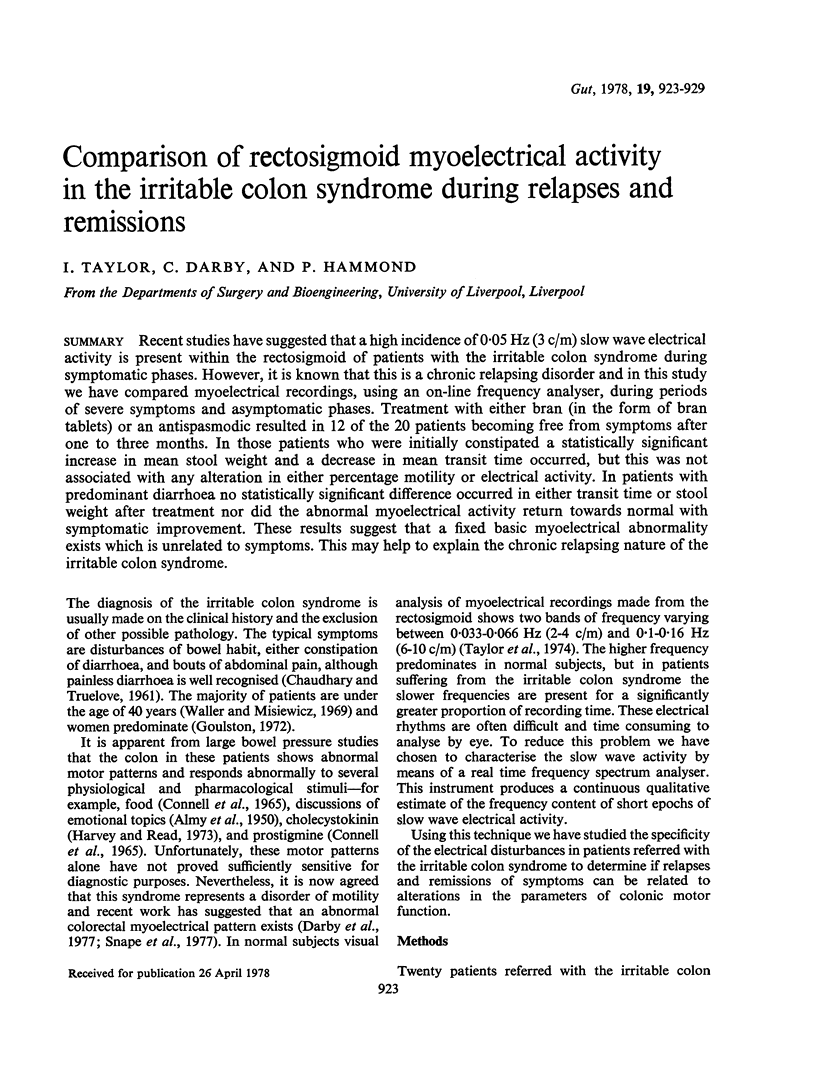
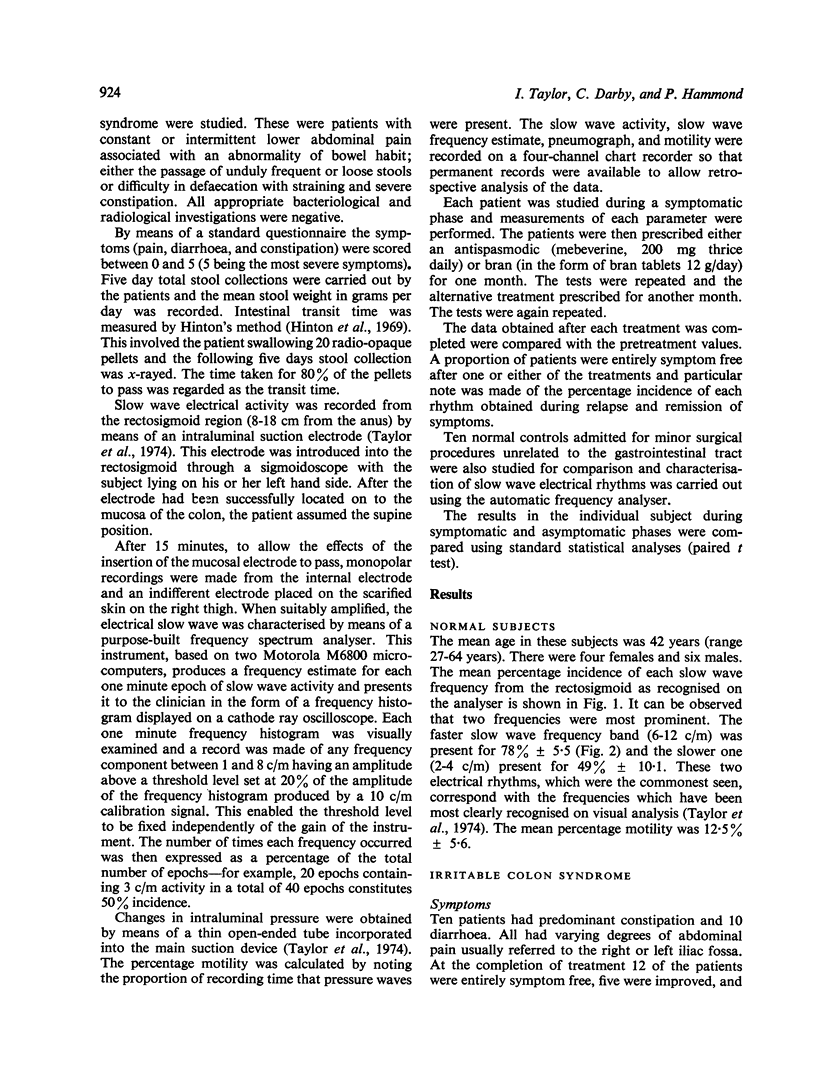
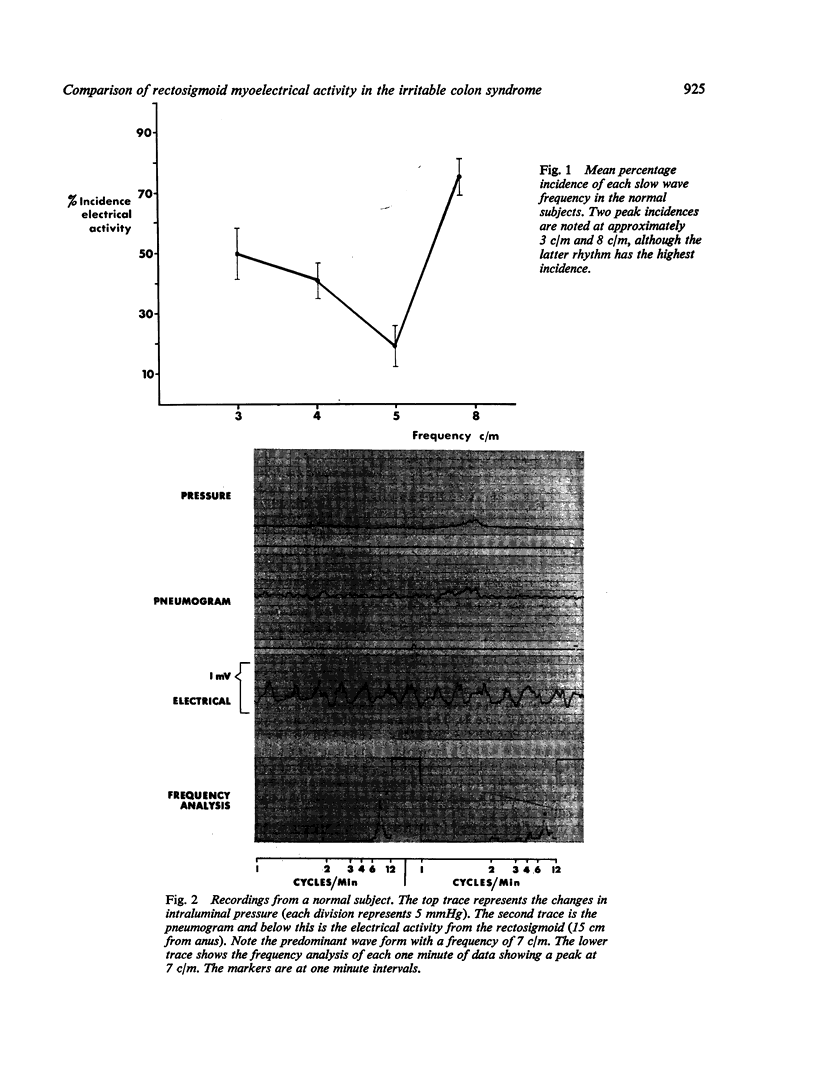
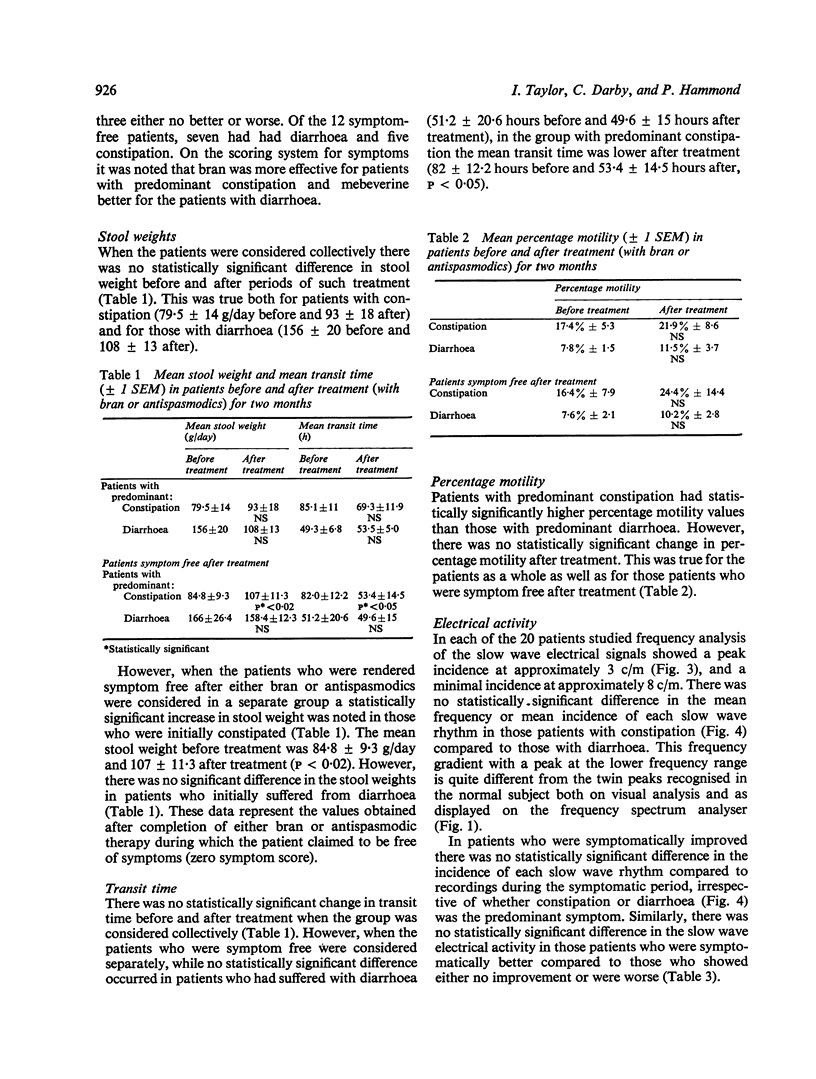
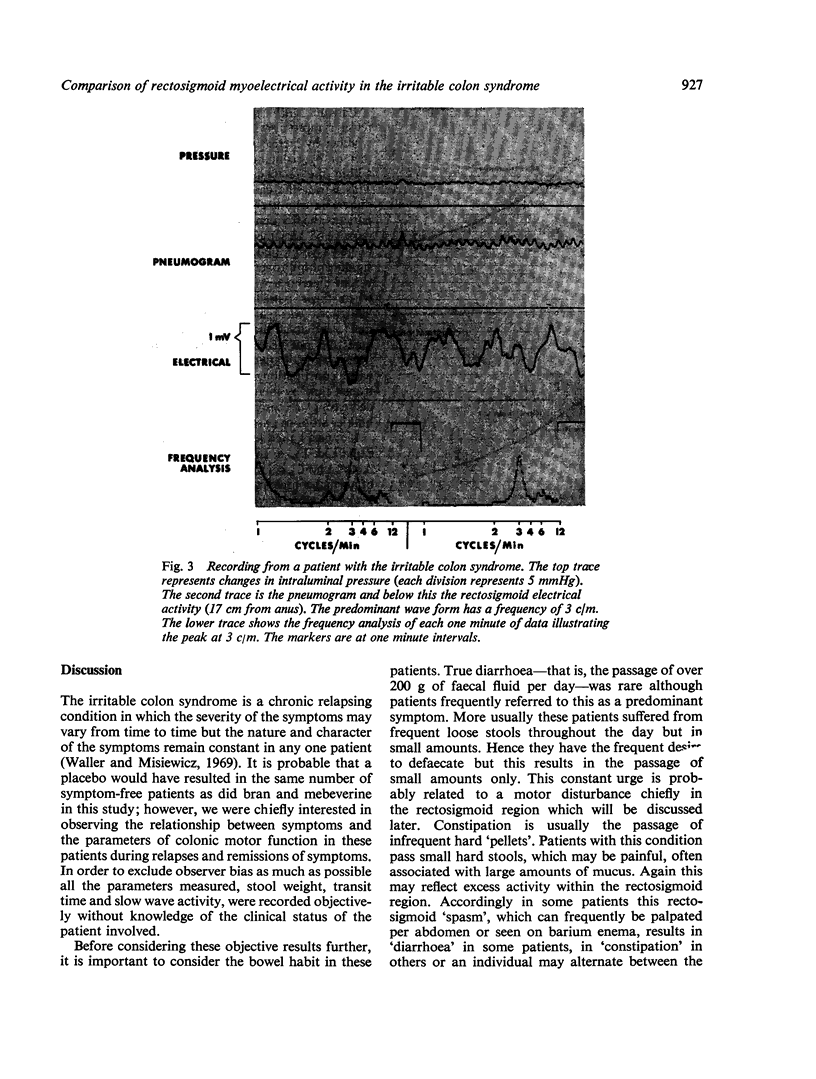
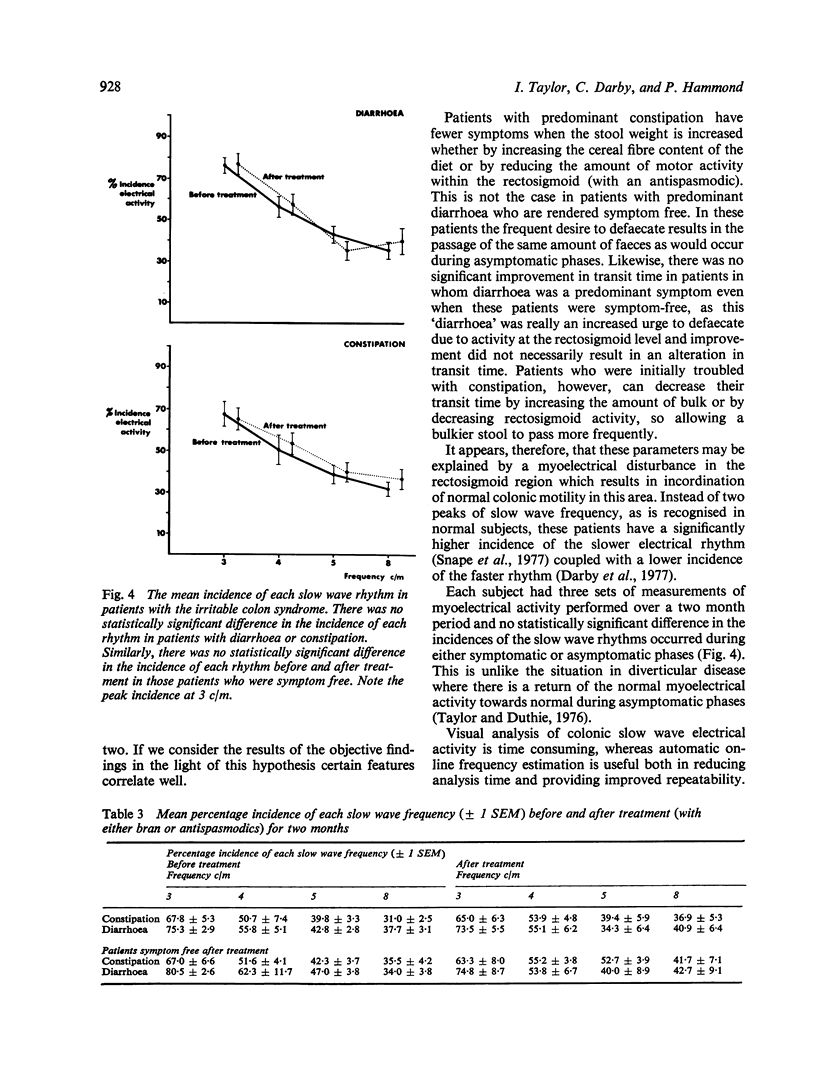
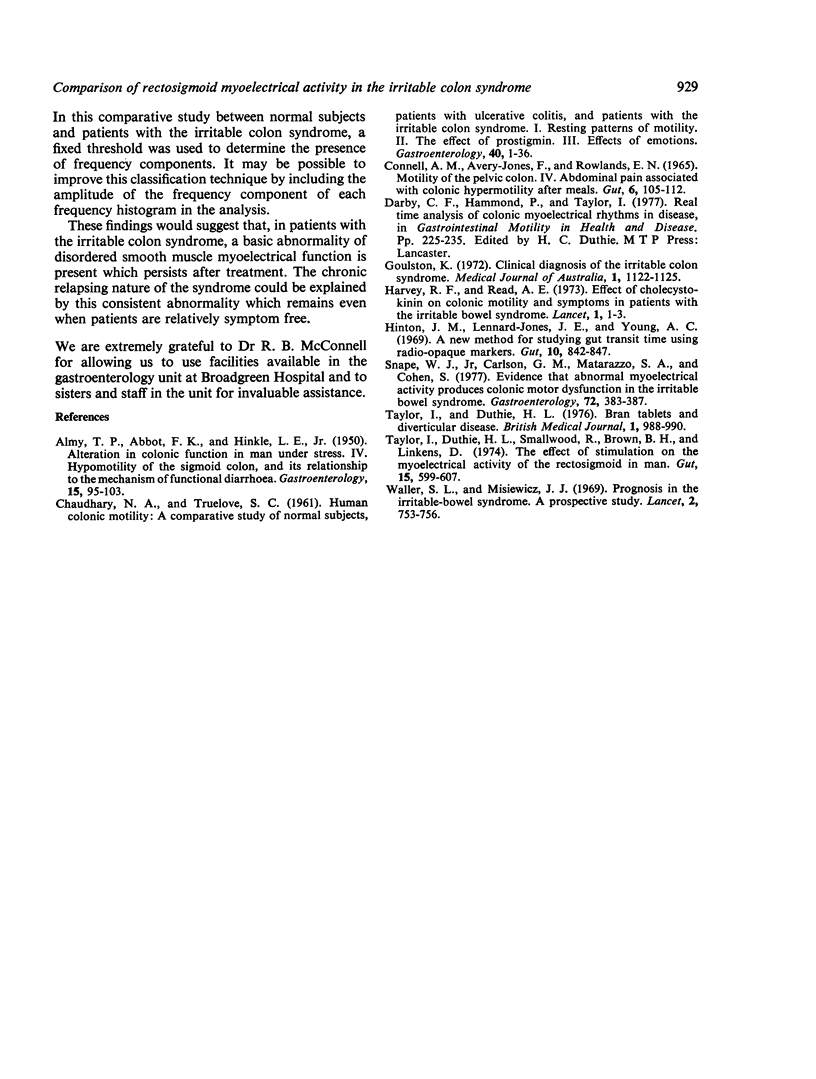
Images in this article
Selected References
These references are in PubMed. This may not be the complete list of references from this article.
- ALMY T. P., ABBOT F. K., HINKLE L. E., Jr Alterations in colonic function in man under stress; hypomotility of the sigmoid colon, and its relationship to the mechanism of functional diarrhea. Gastroenterology. 1950 May;15(1 1):95–103. [PubMed] [Google Scholar]
- CHAUDHARY N. A., TRUELOVE S. C. Human colonic motility: a comparative study of normal subjects, patients with ulcerative colitis, and patients with the irritable colon syndrome. III. Effects of emotions. Gastroenterology. 1961 Jan;40:27–36. [PubMed] [Google Scholar]
- CONNELL A. M., JONES F. A., ROWLANDS E. N. MOTILITY OF THE PELVIC COLON. IV. ABDOMINAL PAIN ASSOCIATED WITH COLONIC HYPERMOTILITY AFTER MEALS. Gut. 1965 Apr;6:105–112. doi: 10.1136/gut.6.2.105. [DOI] [PMC free article] [PubMed] [Google Scholar]
- Goulston K. Clinical diagnosis of the irritable colon syndrome. Med J Aust. 1972 May 27;1(22):1122–1125. doi: 10.5694/j.1326-5377.1972.tb116603.x. [DOI] [PubMed] [Google Scholar]
- Harvey R. F., Read A. E. Effect of cholecystokinin on colonic motility and symptoms in patients with the irritable-bowel syndrome. Lancet. 1973 Jan 6;1(7793):1–3. doi: 10.1016/s0140-6736(73)91219-1. [DOI] [PubMed] [Google Scholar]
- Hinton J. M., Lennard-Jones J. E., Young A. C. A ne method for studying gut transit times using radioopaque markers. Gut. 1969 Oct;10(10):842–847. doi: 10.1136/gut.10.10.842. [DOI] [PMC free article] [PubMed] [Google Scholar]
- Snape W. J., Jr, Carlson G. M., Matarazzo S. A., Cohen S. Evidence that abnormal myoelectrical activity produces colonic motor dysfunction in the irritable bowel syndrome. Gastroenterology. 1977 Mar;72(3):383–387. [PubMed] [Google Scholar]
- Taylor I., Duthie H. L. Bran tablets and diverticular disease. Br Med J. 1976 Apr 24;1(6016):988–990. doi: 10.1136/bmj.1.6016.988. [DOI] [PMC free article] [PubMed] [Google Scholar]
- Taylor I., Duthie H. L., Smallwood R., Brown B. H., Linkens D. The effect of stimulation on the myoelectrical activity of the rectosigmoid in man. Gut. 1974 Aug;15(8):599–607. doi: 10.1136/gut.15.8.599. [DOI] [PMC free article] [PubMed] [Google Scholar]
- Waller S. L., Misiewicz J. J. Prognosis in the irritable-bowel syndrome. A prospective study. Lancet. 1969 Oct 11;2(7624):754–756. [PubMed] [Google Scholar]



